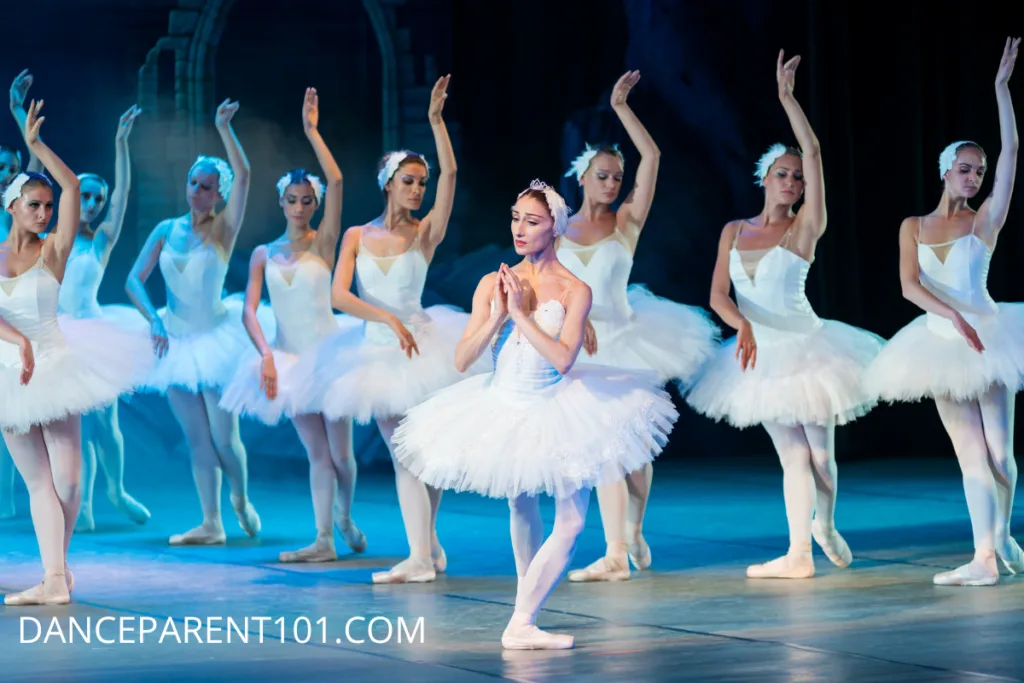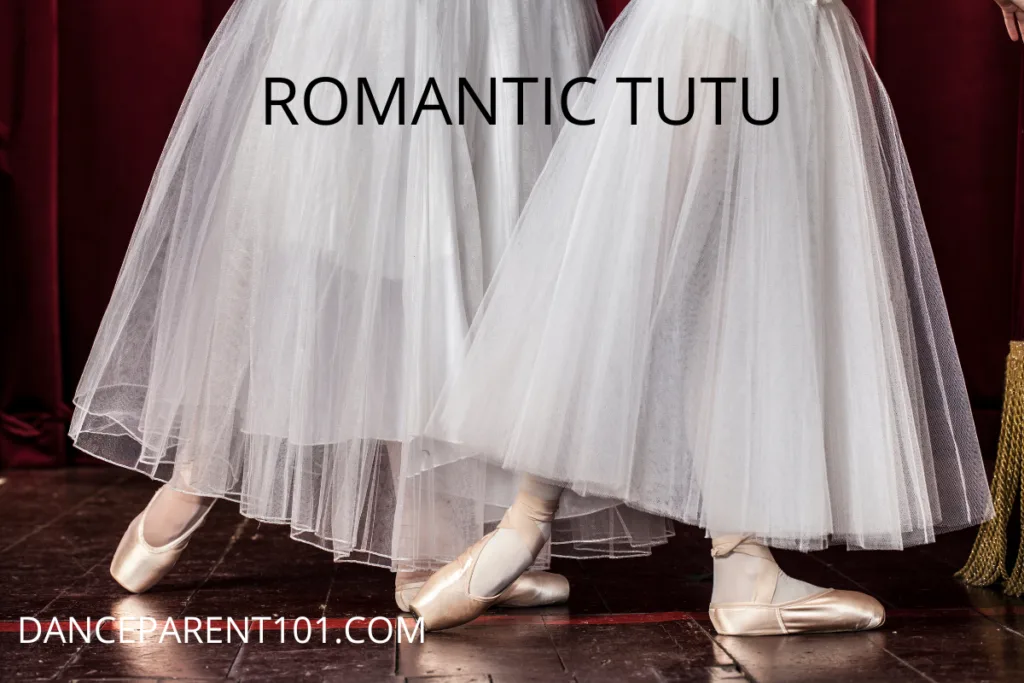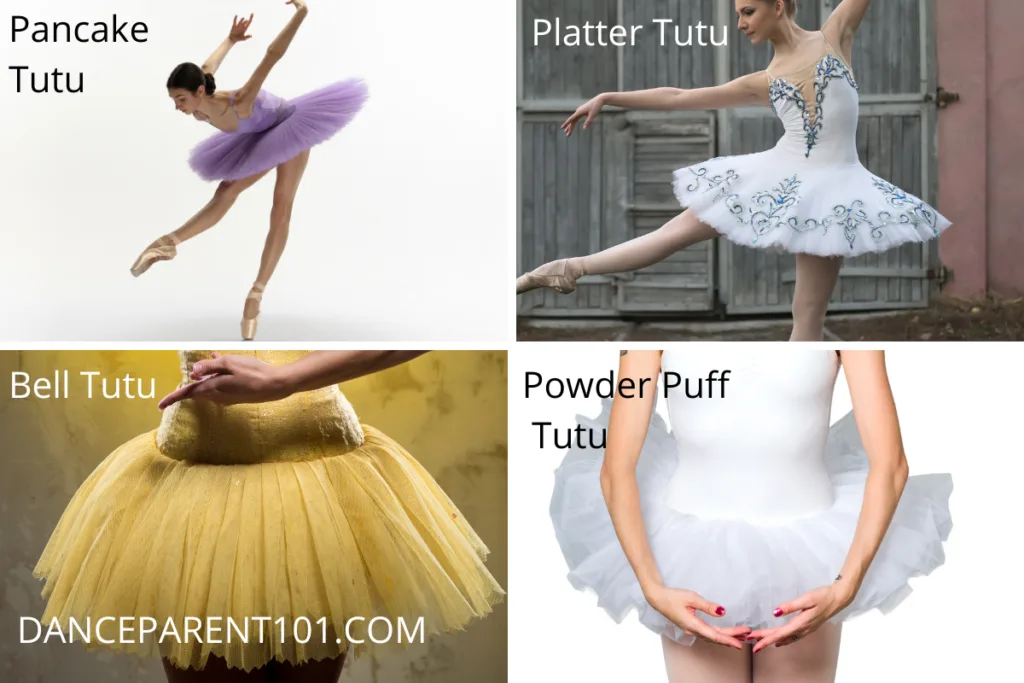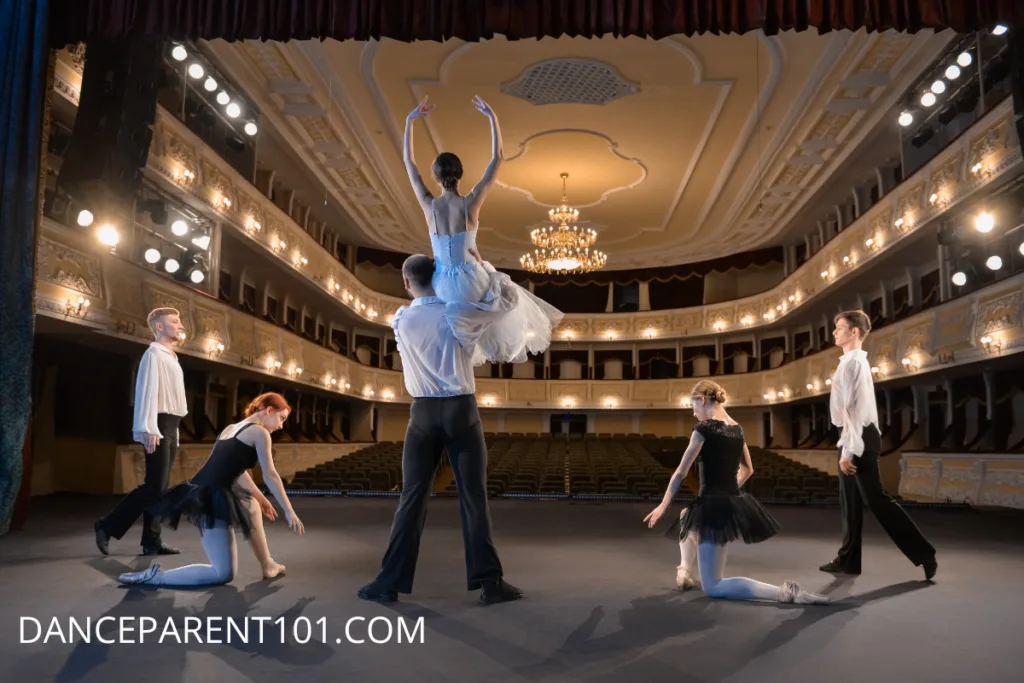When you think of ballet, the first thing that probably comes to mind is a ballerina in a pink tutu. Tutus are an integral part of ballet attire but why do ballerinas wear them and who even thought of making one?
Tutus are used and worn in ballet as they create the perfect frame for the female dancer’s balletic form. Tutus emphasizes a dancer’s elegance and gracefulness whilst allowing the dancer to move freely. They help to create the illusion that the dancer is floating on air.

In this blog post, we’ll take a closer look at why tutus are used and worn in ballet and give you some fun facts about Tutus along the way!
What is a tutu?
The ballerina tutu is a type of skirt made from netting or netted or tulle skirt a ballerina wears.
A tutu can be attached to a leotard which is generally how young dancers will wear one.
Professional ballerinas generally wear tutu’s attached to specially made panties. The tutu is then worn with a matching bodice which is a totally separate piece of costuming!
Why do Ballet Dancers Wear Tutus?
Ballet dancers wear tutus because the costume helps them to appear elegant and graceful and allows the dancer to move freely. They help to create the illusion that the dancer is floating on air.
Tutu’s have been developed, designed and changed over many years all in an effort to create the most ethereal and elegant costuming that assists in exaggerating the grace and beauty of the dancer and choreography.
Why Do We Call a Ballerinas Skirt A Tutu?
There are lots of resources available that theorize that tu tu or cu cu was used because it is the French word for bottom used mainly by or for children.
But this really made no sense to me for it to be the source of the name for this costume seeing that the first tutu’s were long and you could not see a dancer’s bottom compared to the classical tutus used today.
However, if you research the language, tu tu and cu cu both are very close to the phrase Koo Koo or Coucou meaning hello or hi.
But it is not an everyday way of saying hello in French – in fact when translated for meaning in English it more resembles ‘peek a boo’ or refers to the Cuckoo Clock.
When linked to this meaning the word tutu makes much more sense.
A tutu allowed the female dancer to show off their nimble leg work – a peek-a-boo as such, especially in 1832 when it was not thought of as modest to appear in public showing more than your ankles!
Whatever the origins, the word tutu today is synonymous for the ballerina skirt!

Do Ballerinas have to Wear Tutus?
No, ballerinas do not have to wear tutus. In class for example a leotard and tights are mainly worn.
It is not until rehearsals begin for a production or students are in pas de deux lessons that they might be worn to assist in ensuring dancers learn how to move with the tutu.
On stage and for performances it is the choreographer’s and director’s choice as to what the ballerinas costume will be on stage. If the ballet is traditional the dancers will most probably be costumed in tutus.
What Is A Tutu used For?
The use of a tutu in ballet is as the traditional costume of a female ballet dancer. A tutu does not help a ballet dancer balance, keep warm or float on air as some might propose.
It has no actual use other than to help make the dancer appear ethereal, graceful and elegant – and well like a ballerina! Many ballerinas will tell you however the tutu has a powerful purpose in helping them be in the right frame of mind for ballet just like a basketball player might feel putting on their uniform before a game!
Originally long skirts were worn by ballet dancers, for the purpose of modesty so the female dancer’s legs and form could not be seen.
So this was its original use – however as time has passed and social constructs such as these have changed the long skirts became shorter to enable freedom of movement and the dancer’s leg work and balletic lines to be seen.
What Are Tutus Made of?
Today ballet tutus are most commonly made of diamond netting. Tulle is also used but mainly for romantic-style tutus which hang longer. Coutil is the industry standard fabric used to support and line tutus.
Most classical tutus today have between 10 to 13 layers of netting that is roughly 25 meters or 82 feet of netting or tulle!
Before the invention of netting and tulle tutus were made from tarlatan. Tarlatan is a cotton material with a wide weave that was stiffened to make tutus.
Contemporary designs can also see tutus made from lycra or plastic like materials stretched over a metal hoop or from organza and other fabrics. They can also be made in any color of the rainbow.
What are the different types of tutus?
There are three main types of tutu:
- Romantic
- Classical – Pancake, Bell, Powder-Puff and Platter
- Contemporary
The Romantic tutu is long and flowing and recalls the imagery of the first tutu worn by Maire Taglioni in La Sylphide.

The Classical tutu is what you will most commonly associate with the tutu, however even these come in different styles!

The pancake and platter tutu, are reminiscent of their names and basically juts straight out from the hips. The difference between them is best known by the dressmaker as the pancake tutu will have pleats on top, where as the platter with have a flat top layer that can be ornately embellished.
The bell tutu looks like a bell – short and curved and the Powder-Puff is basically a poufy tutu that does not have a metal hoop so it can bounce more freely.
The powder-puff tutu is usually what you see little kids in – it is short and poofy! However, they have their use on stage dependent on the characters and choreography being portrayed.
The contemporary tutu is basically any type of tutu that deviates from the above and is noticeably new and contemporary in design.
When Did Ballet Dancers Start Wearing Tutu’s?
Ballet Dancers began wearing tutus in 1832 after Maire Taglioni wore what we today call a romantic tutu on stage in the premiere of La Sylphide in Paris.
What is the History of the Tutu?
The history of the tutu is somewhat murky, but it is believed that the skirt was first introduced into ballet in the 18th century by French dancer Marie Taglioni who cut or hemmed her skirt to a shortened length below her knees so that the audience could see the intricate footwork she had worked so hard to perfect!
At the time, the tutu was made from transparent materials such as gauze and lace, which allowed audiences to see the silhouette of the legs and feet of the dancers more clearly.
The modern Classical tutu was popularized in the 19th century, as dancers dared to shorten the skirts above the knee to enable the lines of the legs and footwork to be viewed more clearly.
The longer skirts were also not practical with one dancer accidentally setting hers alight on stage from the gas lamps that lit the stage! Many months later she, unfortunately, died from the complications of her burns!
Some attribute the classical tutu’s popularity to the Russian prima ballerina Anna Pavlova, who wore one in her performance of “The Dying Swan” in 1905.
Pavlova’s influence, as well as many other ballerina’s of the time, led to the development of the shorter classical tutu, which is still the most popular type of tutu worn today.
Who Invented the Ballet Tutu?
Ballet dancers themselves invented the tutu!
It is said Marie Taglioni in the 1800’s, raised the hem or her ballet skirt first, starting the trend to show the female dancers feet and legs on stage.
How Do You Wear a Tutu?
There are several ways a tutu can be worn: attached to a leotard, attached to panties and worn with a matching bodice, or attached to panties and worn over a leotard as is done for practice.
Leotard Tutu or All in One
The first is when the tutu is presewn or attached to a leotard. When worn in this form, you simply slip into the leotard as you would a bathing suit and the tutu depending on length and stiffening will protrude out from where it is stitched.
Tutu and Bodice – In Two Pieces
The second way a tutu is worn is in two separate pieces and how most professional ballerinas wear their tutus for their performances.
The tutu is attached to a strong waist band called a basque which holds the weight of all the layers and embellishments on the tutu.
The basque is attached to the panty which the dancer steps into and pulls up to their waist. A separate matching bodice that can have boning inserted similar to a corset, dresses the torso of the dancer.
Rehearsal Tutu
The last way a tutu is worn is mainly for rehearsals (however some will use them matched in color to a leotard for performance as well).
This type of tutu is generally attached to the panty which has an elasticized waistband. This is so it is easy to slip on and off during class or rehearsals.
Of all the tutu’s these are probably the least looked after and most companies, studios and schools simply have a selection that the students use and share when required.

What Do You Wear Under a Tutu?
A ballerina wears tights, a body stocking and skin coloured underwear under a tutu.
Tights are generally in the color of ballet pink, however as dance becomes more inclusive and as more companies sell pointe shoes in different shades, dancers have the choice to wear a color closer to their own skin tone.
A body stocking or suit is a leotard made from a thin material similar to ballet tights. It will usually have a low back and thin straps so it can hide under the bodice of the tutu. Not all dancers choose to wear body stockings, as they are not always well hidden under a costume.
Depending on the dancer, panties or a thong or g-string that matches the color of the skin will be worn. Some dancers (especially younger) choose to wear no underwear, as ballet tights act as a barrier between the skin and the costume instead you can read about that in our article Should my kid wear underpants, under their dance leotards and costumes? They may also be wearing a body stocking or suit and find this to be sufficient covering as well.
Some ballet dancers also choose to wear skin colored bras, especially under tutus fitted to leotards which do not offer very much support.
The straps on these bras can usually be adjusted to hid beneath the costume straps or can be pinned so they are not seen. Some dancers have a bra or support built into their costumes if needed.
Why do some dancers in the ballet wear tutus while others costumes have longer skirts?

Some dancers in a ballet wear a long skirt called a romantic tutu because that is the tradition for the particular ballet or character or because the choreographer and director feel that the longer skirt helps to portray the vision they have for the ballet.
Shorter tutus are worn to showcase the foot and legwork of the ballerinas, so sometimes you may find the dancers in the corps de ballet or the ensemble wearing a longer skirt but the principals and featured dancers wearing shorter tutus – it can also be the other way around.
This helps the audience focus on the dancers being featured in the performance.
What does wearing a tutu feel like?
Wearing a tutu for the first time can feel like you are wearing a large plate around your waist.
It is hard to know where to put your hands, as you can’t hang them by your side, rather you have to rest them on the tutu.
When you bend over the tutu usually bends over with you, and you need to become even more conscious of the space around you as unless you want to squash the tutu, meaning you need to be aware of what your tutu is doing when standing close to others or next to the wall etc..
When you jump and bounce, the tutu will follow, but it usually follows a few milliseconds after you move, which helps give the dancer that feeling of suspension and to the viewer makes the dancer look weightless!
How Do You Clean a Tutu?
You cannot wash a tutu like you would your clothes!
Depending on how ornate and delicate the tutu, it may be able to be hand or spot washed. Some can be drycleaned.
They generally last by being looked after and stored carefully and when they are too dirty, tattered and wornout are basically known as being dead and ready to be thrown away.
They can be freshened up, of course, mended and given a new life by a good seamstress or tutu maker who can replace layers of tulle for example which are no longer stiff.
Some people also swear by the use of a mixture of vodka and water spritzed over stains or smells to keep them fresh!
Short tutus are generally stored upside down to help keep them stiff when they are not being worn.
How Do You Make A Tutu?
There are various techniques and ways of making a tutu and it can depend on the style being made as well as how stiff the tulle is and what type of bodice it will be attached to. The following are a few videos on how one is made!






